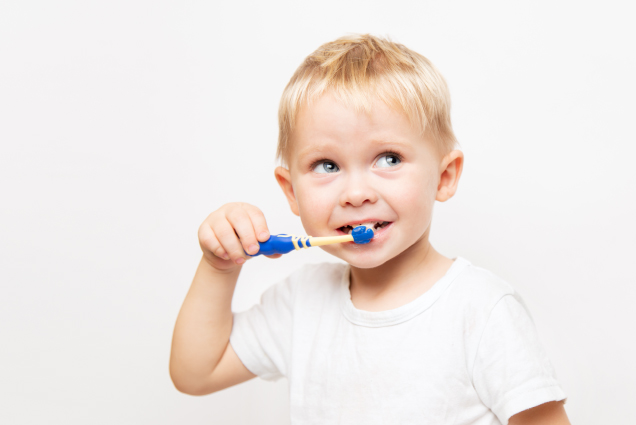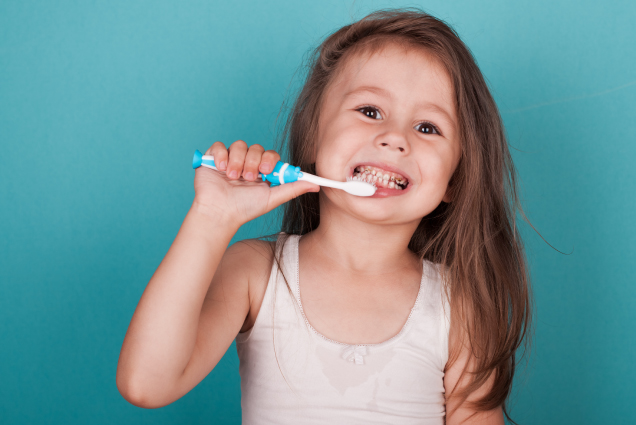TWO-PHASE TREATMENT
Two-phase orthodontic treatment is a specialized process combining tooth straightening and physical, facial changes. The purpose of two-phase treatment is to maximize the opportunity to accomplish the ideal healthy, functional, aesthetic result that will remain stable throughout your life.
What if I put off treatment? Putting off treatment can result in a need for more invasive treatment later in life that may not completely fix your smile. Early treatment is most effective for achieving lasting results
PHASE ONE
Your foundation for a lifetime of beautiful smiles.
The goal of Phase-One treatment is to help the jaw develop in a way that will accommodate all of the permanent teeth, improve the way the upper and lower jaws fit together and increase airway patency to significantly help to improve the respiratory patterns.Children often exhibit early signs of respiratory distress and jaw problems as they grow and  develop.
develop.
An upper jaw that that is too small and narrow and a lower jaw that is recessive are common features that can be recognised from an early age. If children over the age of six are found to have this jaw discrepancy, frequently grind their teeth, tend to be obvious mouth breathers and often snore or breathe loudly as well as experiencing restless sleeping patterns and morning fatigue, they are candidates for early orthodontic/orthopedic treatment.
Also, if children around the age of eight have crowded front teeth, crossbites, absent teeth, protruding front teeth that are at high risk to trauma or have finger-sucking habits, early treatment can assist in correction, often avoiding trauma and the need to extract permanent teeth later.
- Planning now can save your smile later: Children benefit tremendously from early phase treatment. Receiving early treatment may prevent the removal of permanent teeth later in life, or the need for surgical procedures to realign the jaws.
- Taking records to determine your unique treatment: Orthodontic records will be necessary to determine the type of appliances to be used, the duration of treatment time, and the frequency of visits. Records consist of models of the teeth, X-rays, and photographs. During your child’s initial consultation, Dr Stramotas will take records to determine if early treatment is necessary and importantly to plan ahead ensuring a healthy future.
TRANSITION OR RESTING PERIOD (10-12 years old)
In this phase, the remaining permanent teeth are left alone as they erupt. Retaining devices may not be recommended if they would interfere with eruption.
It is best to allow the existing permanent teeth some freedom of movement and allow the child to grow unhindered. A successful first phase will have created room for permanent teeth to find an eruption path. Otherwise, they may become impacted or severely displaced. Not all patients require Two-phase treatments and those not requiring any Phase one treatment are usually monitored on a yearly basis
- Monitoring your teeth’s progress At the end of the first phase of treatment, teeth are not in their final positions. This will be determined and accomplished in the second phase of treatment. Selective removal of certain primary (baby) teeth may be in the best interest of enhancing eruption during this resting phase. Therefore, periodic review appointments for observation are necessary, usually on a 6-12 monthly basis.
PHASE TWO
Stay healthy, build confidence, function well and look attractive
The goal of the second phase is to make sure each tooth has an exact location in the mouth where it is in harmony with the lips, cheeks, tongue, and other teeth. When this equilibrium is established, the teeth will function together properly. Phase two treatment takes place in the adolescent growth spurt, using the patents’ growth to assist with orthodontic and orthopedic correction. It usually involves full upper and lower fixed braces and the teeth and jaws are are best positioned to give an ideal bite and optimal facial balance and symmetry.
In summary the beginning of the first phase, orthodontic records were made and a diagnosis and treatment plan established. Certain types of appliances were used in the first phase to correct and realign the teeth and jaw. The second phase begins when all permanent teeth have erupted, and usually requires braces or fixed appliances on all the teeth for an average of 18-24 months. Retainers are worn after this phase to ensure you retain your beautiful smile into adulthood.








 develop.
develop.